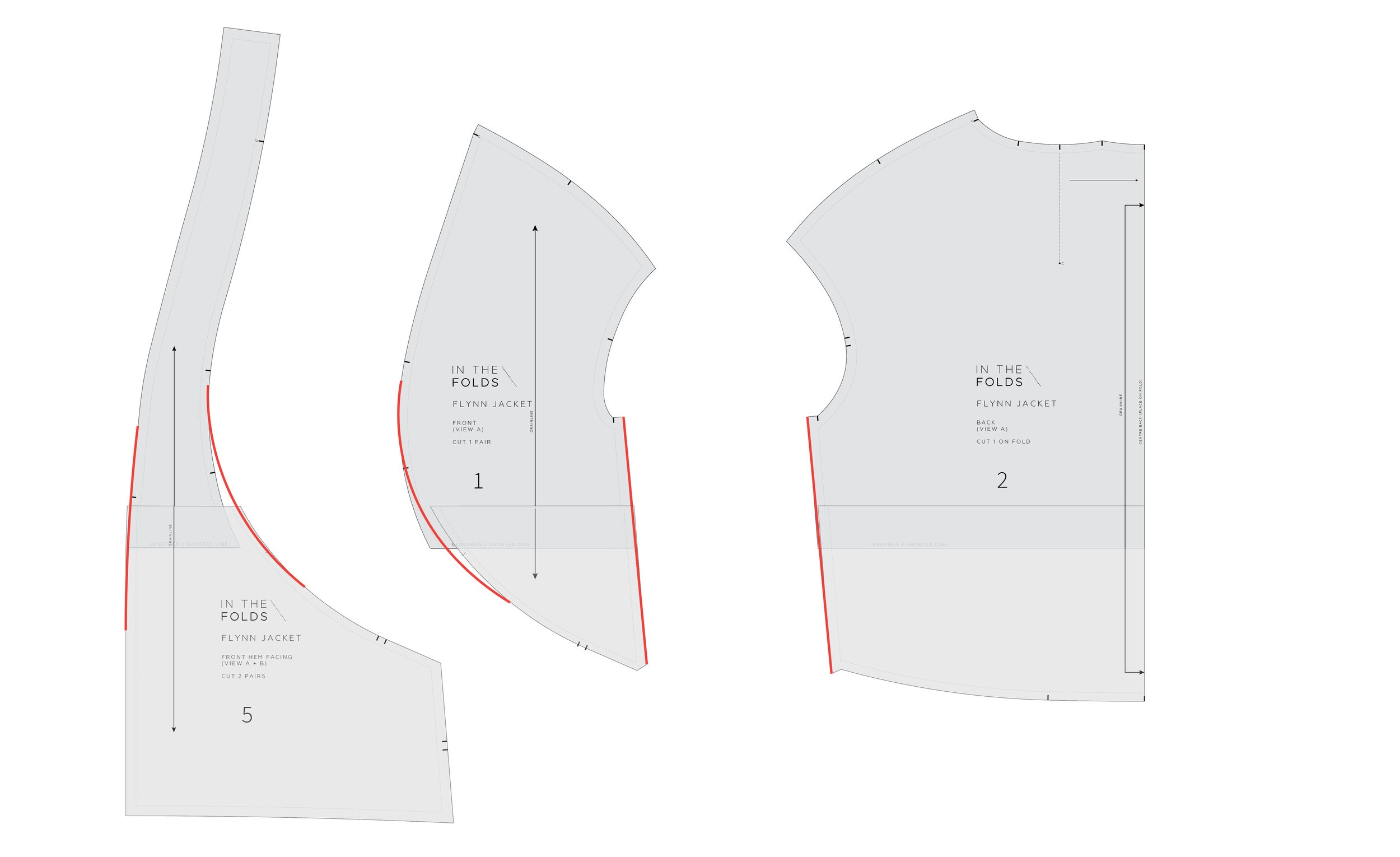I am very excited to let you know that the Hove jacket is here!
It will be no surprise to you (if you have been following along with my journey for a while) that this pattern has taken a long time to come into fruition. I even accidentally gave a (not so sneaky) sneak-peek of it almost 2 years ago when I was running my Kickstarter campaign.
The Flynn jacket and the Hove jacket actually started out as two variations of the same pattern! Over time as I continued to work on the patterns, I realised they were moving further and further apart in terms of design, and were going to become a mammoth of a pattern that would probably intimidate makers - rather than inspire!
The Hove jacket is a loose-fitting jacket designed for woven fabrics. With two different styles, it is the perfect layering piece. It has a relaxed sporty vibe that can be dressed up or down, depending on what you pair it with.
Hove features a fully lined hood, open-ended zip closure (or double-ended zip if you'd prefer), high-low hem, in-seam pockets and pleated back detail.
VIEW A DETAILS
View A has a dropped shoulder and sleeve with a hem facing. The sleeves are designed to be worn either straight or folded back, for a more casual look
VIEW B DETAILS
The Hove jacket View B is sleeveless (creating the look of a dolman sleeve) and has been designed to be worn over long sleeve tops and dresses, although works equally well in warmer weather over a sleeveless top or t-shirt.
I am really excited to continue releasing patterns that work so well worn together! In the pattern shoot, we paired the Hove jacket with the Darlow pants, Collins top and Rushcutter dress.
Who is the pattern for?
The pattern is placed at a Level 3 (out of 5) on the In the Folds pattern skill scale, which means that you should feel confident using a range of different sewing patterns and class your sewing skills as immediate (or courageous beginner).
In saying that, the Hove jacket is a great entry level jacket, as you don’t have to worry about lining and due to it’s oversized silhouette, it is easy to achieve a good fit.
As always, the pattern is available in 10 sizes (A - J, which equates to Australian sizes 6-24). For more information about sizing, please visit the Sizing Chart.
On both views, all seams are finished with bias binding, for a beautiful and high-end finish. This means that not only will you end up with a beautifully finished jacket, you will also learn some new skills in the process!
What skills will you learn by working through this pattern?
By working through this pattern, you will gain confidence in:
Sewing curved seams
Sewing pockets
Setting in sleeves
Finishing seams with bias binding
Inserting an open-ended zip
Sewing a hood
What the testers said about this pattern:
‘As a beginner, when I first read the instructions I thought I was out of my depth, but as I started sewing pieces just magically came together, it was my most accomplished make to date and have given me great confidence.’ - Jo
[The Hove jacket pattern] ‘is really clean in the delivery. Your instruction style is spare but clear. Your designs are unique and kind of bananas in a beautiful way, so sewing this jacket up was such a delight and surprise. I just couldn't wait to see how you would have us pull it all together! And it was not only a great intellectual sew, but the way it fits is so well done. I think you're brilliant and nobody is doing what you're doing! THANK YOU!’ - Celeste
‘The hood! The hood! It is so satisfying to have and it came together so well. I was a bit nervous about it, but it ended up being one of the easiest parts of the pattern for me. Also, pinning the long seams was a challenge (I ran out of pins!), but they were really satisfying to sew.’ - Leanne
‘I love the ease in the hips. I almost always need to grade up in the hips (29"waist, 43" hip) but it was so nice not to have to! The shoulders fit so nicely too.’ - Mia
‘It was an amazing experience… I found you develop very clever methods for the finishings (the thing with the bias binding that was kind of difficult in the beginning was super delightful after I understood it, and the puzzle of the pieces (I don't know how to say this in other way) was really delightful - seeing how everything was coming together. This made me reconsider sewing all your other patterns :)’ - Juliana
For your reference, the model Marisabel wears a Size F.





































